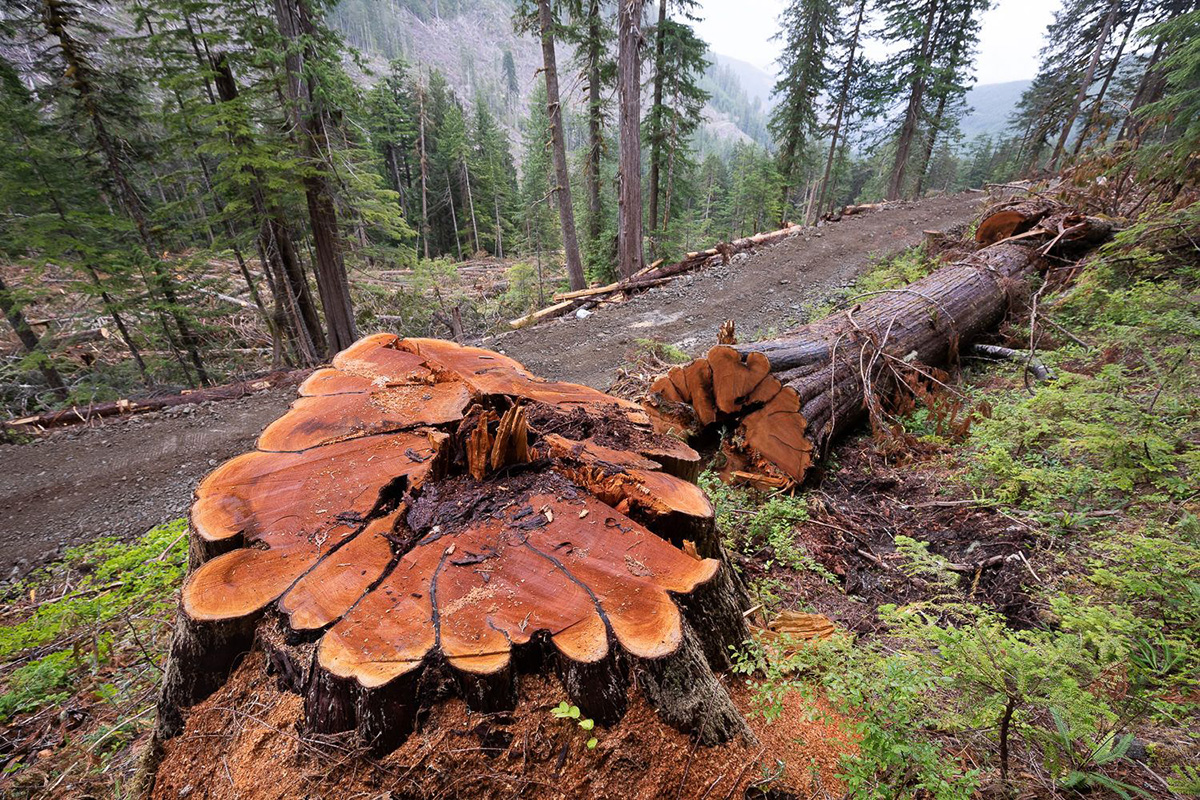Ten days before the snap election call, B.C.’s NDP government announced a “new, holistic approach” to protecting old-growth forest.
The announcement coincided with the release of an independent report commissioned by the province that outlined 14 recommendations for managing old growth, including prioritizing Indigenous engagement, focusing on biodiversity and increasing community involvement. It also recommended suspending logging in forests “at very high and near-term risk of irreversible biodiversity loss.”
The government responded by announcing a new approach to managing old growth that would engage First Nations, industry, labour and environmental groups, and deferred logging in 353,000 hectares of forest.
But NDP Leader John Horgan’s early election call shut down government communications, leaving many with unanswered questions about what the NDP’s new direction for old growth really means.
“[The election] came so quickly after the announcement, we didn’t really even have time to digest the report,” says Torrance Coste, national campaign director with the Wilderness Committee.
Coste noted it’s unclear what the government intended by “deferring” logging in high-risk areas.
“The governing party called these areas ‘protected’ in their platform. Does this mean goal number one is to shift these areas into protection? And, if so, what’s the process for that?”
In its platform, the NDP promises to “implement recommendations of the Old Growth Strategic Review to protect further old-growth stands — in addition to the 353,000 hectares we protected in September.”
But only about 200,000 hectares of the deferral area is believed to be old growth, less than half the highest value old growth in the province.
In addition, Coste points out, those 353,000 hectares aren’t protected — logging has simply been deferred. That deferral expires Aug. 31, 2022.
“They didn’t protect a single hectare in September. They announced two-year deferrals,” he says. “Either they’re trying to take credit for something they didn’t do, or they’re committing to protecting every single hectare of those deferral areas, [and] the deferral was just the interim step.”
In an emailed statement, George Heyman, NDP candidate for Vancouver-Fairview and minister of environment and climate change strategy, said the deferrals were always intended as a first step and more work lies ahead.
“The BC NDP government is looking to create a long-term, comprehensive strategy on old growth that protects vital biodiversity while supporting workers and communities,” he said. “The current situation is not sustainable environmentally, economically, or from the standpoint of social licence. We have to do better, for both the environment and for jobs. It is much more complex than just moratoriums or legislating timber harvesting areas. It’s a complex problem that requires a complex solution.”
Heyman didn’t respond to a request for clarification about whether, if re-elected, the party intends to adopt the rest of the report’s recommendations or if the platform indicates long-term protection for the deferral areas.
On the campaign trail this week, Horgan said his government is “committed to implementing the report in its totality.” He provided no details on timelines or implementation plans.
BC Green Party candidate Adam Olsen is skeptical. “I just don’t believe them,” he says about the NDP’s intentions if re-elected. Since taking power in 2017, the NDP government has “dragged its heels” on protecting old growth, says Olsen, who is running for re-election in Saanich North and the Islands.
“My experience in the legislature has proven that they try to be all things to everybody and, as a result, they failed to be anything,” Olsen says. He adds that repeated attempts to question outgoing Forestry Minister Doug Donaldson in the legislature resulted in rhetoric around balancing jobs with conservation.
“While the NDP is trying to navigate this reality where they’re trying to protect big trees and yet cut them down so that they can protect the jobs, we’re careening to a point where both are going to end,” he says.
According to Coste, logging continues in some of B.C.’s rarest, most valuable old-growth forests, with only about one per cent of them protected within the deferral areas.
Nearly three-quarters of the land where logging will be paused is in Clayoquot Sound, where industry activities have been shrinking for decades. Areas like northern B.C.’s boreal rainforest and inland rainforests near Prince George and the Central Walbran Valley and Fairy Creek areas of southern Vancouver Island remain open to logging.
Olsen calls it the NDP’s “talk and log” approach to forestry.
“There is a reason why we have the old-growth review panel report in front of us, and that is because the BC Greens were the only MLAs in the legislature with the courage to stand up and ask the questions,” he says. “We pushed the government in the direction of doing that report, and British Columbians need to have BC Greens at the table to ensure that we implement the report to the level that is needed to actually protect old growth and that it’s not just a bunch of words and hot air.”
The Green party’s forestry platform is the most comprehensive of B.C.’s three main parties. It includes giving greater control of forestry to communities and First Nations, more scientific oversight of forestry practices and increased resources to the Ministry of Forests.
In addition, it promises to “immediately move to fully implement the recommendations of the old-growth review panel” and bring an immediate end to logging old-growth forests in high-risk ecosystems.
Job losses would be offset by putting an end to raw log exports and by implementing ecological restoration, Olsen says.
“There is no doubt that we are going to have to transition from the economy that we have to a low-carbon clean economy,” he says. “That’s going to require us to take some of the subsidization that we have in high-carbon intensive emitting industries and redirect it into the industries that are going to help us get to a low-carbon economy.”
Several emails to the BC Liberal Party and its forestry critic, John Rustad, who is running for re-election in Nechako Lakes, were not returned. The party’s platform promises to “introduce legislation to protect the working forest to provide increased certainty on the land base while protecting and enhancing environmental values.”
At an appearance in Merritt two weeks ago, Liberal Leader Andrew Wilkinson emphasized the need to guarantee a “working forest.”
Coste says while the NDP’s recent announcement on old growth may be vague, it offers an opportunity for voters to push the governing party on what its platform says — that it will implement the recommendations of the Old Growth Strategic Review and protect B.C.’s ancient forests.
“To me, that means implementing them all immediately. So, let’s push them on that. I want our movement to tell them what that actually means,” he says. ![]()
Read more: BC Election 2020, Environment


















Tyee Commenting Guidelines
Comments that violate guidelines risk being deleted, and violations may result in a temporary or permanent user ban. Maintain the spirit of good conversation to stay in the discussion.
*Please note The Tyee is not a forum for spreading misinformation about COVID-19, denying its existence or minimizing its risk to public health.
Do:
Do not: